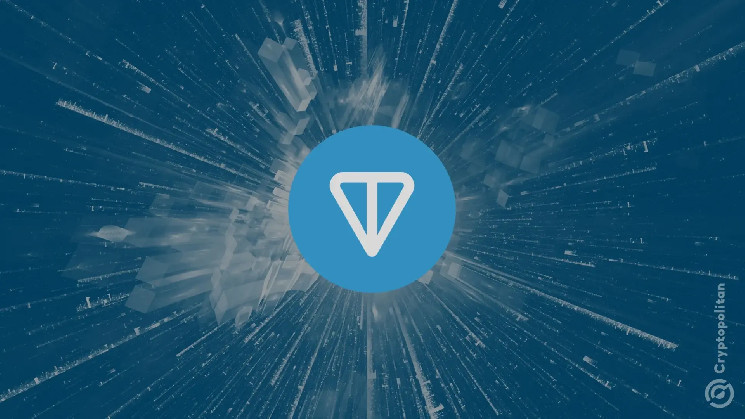Monetizing opportunities for Telegram’s TON-powered mini-apps
 cryptopolitan.com 16 h
cryptopolitan.com 16 h TON-based Telegram mini-apps (TMAs) serve as avenues to enhance Telegram user experiences by offering extra services and functionalities. The TMAs could be monetized through advertising, in-app purchases, subscription models, token issuance, and Play-to-Earn or Tap-to-Earn games. TON mini-apps significantly changed user interaction with Telegram’s digital services.
Kirubakaran Reddy, a Web3 specialist, noted that the TON ecosystem experienced massive growth, especially in the mini-game ecosystem. He pointed out over 300 playable mini-games within the Telegram app. Reddy claimed that 500M of Telegram’s 900M users engaged with TMAs monthly. Recent funding, including a $2.5M incubation program and a $40M TON Venture fund, underscored the platform’s future.
Telegram mini-apps revenue models drive profits on the TON blockchain
Token issuance was reportedly the simplest and most popular profit model for TMAs on the TON blockchain. The number of blockchain addresses for mini-app tokens was the most straightforward metric, with DOGS exceeding 5 million addresses and the PEPE memecoin having less than 300K addresses. Converting many users into verified KYC users on CEX (centralized exchanges) introduced the pre-deposit model capitalizing on the CEXs’ desire to gain new users.
In-app purchases in mini-games were the main revenue model for game developers. Users paid for virtual items like character skins and boosted experiences using in-game currencies. The in-game currencies could be bought to get extra lives or advance progress. After Catizen issued its tokens, users making in-app purchases received relatively more airdrops than those who did not.
Advertising revenue was another component provided for mini-game developers where income could be generated through rewarded interstitial ads, video ads, and banner ads. Adsgram was designed to support different ad formats, including static banners, 15-second videos, and channel subscriptions. Hamster Kombat adopted these revenue models, allowing users to earn coins and keys by watching ads in the Tap-to-Earn mini-game.
Brand partnerships and game distribution were another revenue model in which game developers collaborated with brands to embed revenue-generating brand ads. With Hamster Kombat’s commitment to the ‘no-pay-to-win’ model, the developers reportedly partnered with many games. The model encouraged players to download and play games to earn key generation codes. The codes allowed players to support the mini-games ad revenue by playing other games without spending money.
Viral marketing and social interaction reportedly helped mini-games achieve user growth and increased activity by leveraging social sharing and other viral marketing techniques to benefit from in-game social reward mechanisms. Telegram mini-app invitation links could be used to invite more users, enhancing in-app purchase conversion rates and user engagement.
Tournament prizes and leaderboards could also be set up to attract more players and increase playing activity. Game developers could generate revenue through events, user entry fees, or sponsorship. The model was particularly suitable for players who wanted to earn in-game virtual items or physical rewards by participating in tournaments. Some tournaments encouraged players to buy items during competitions or pay an entry fee.
Some mini-games offered subscription services and VIP memberships, where subscribers received unique items or features, especially for removing ads, special in-game privileges, and extra rewards.
The reward system allowed some mini-game players to reward content creators or tip game developers to show support for quality content or features. The model reportedly worked well for indie game developers with creative mini-games, which had tipping options within the game to support developers through microtransactions.
Software developers Ekotek identify Telegram’s leading mini-apps
Ekotek, a leading blockchain software developer, disclosed that Catizen had 2.3 million users, over 220K on-chain participants, and over 520K daily active users. The mini-app saw significant transaction activity, with users executing nearly 2.6 million on-chain transactions, leading to over $3 million in revenue.
The software development company identified DOGS, which had climbed to the top 100 crypto projects by market cap with over $1 million Telegram users as of September 2024. DOGS achieved a record-breaking TGE (token generation event) on the TON ecosystem, with over 17 million users claiming DOGS currently held in 4.5 million wallets. Binance users could also earn DOGS tokens by staking FDUSD or BNB.
Hamster Kombat users earn rewards by simply tapping to collect coins. Users earned more coins by completing daily tasks like watching ads, following the game’s social media channels, and logging in. Referral rewards between 5K and 25K coins could also be earned by users, with premium Telegram accounts earning higher rewards. Hamster Kombat has a community of over 50 million subscribers on its official Telegram channel, 11 million followers on X (Twitter), and over 250 million active players.




